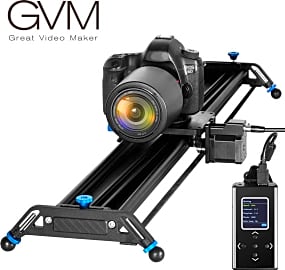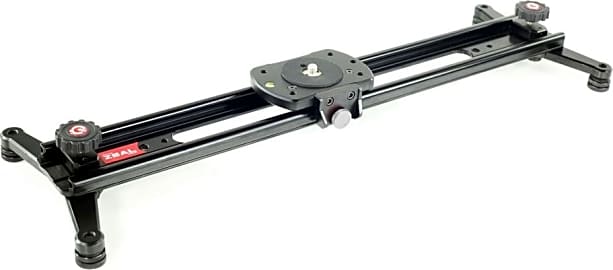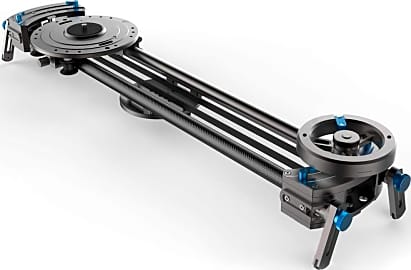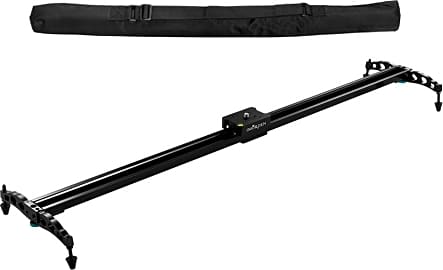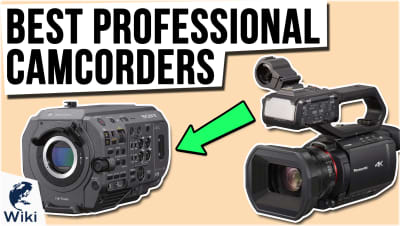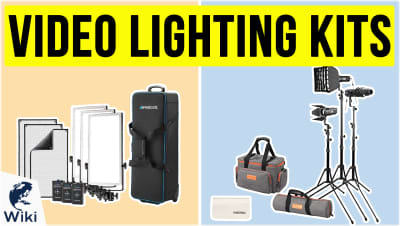The 9 Best Camera Sliders

This wiki has been updated 34 times since it was first published in October of 2016. If you're looking to add a bit more professionalism and versatility to your filmmaking endeavors, you're going to want some steady camera movement. Expand your options beyond basic tilts and zooms with a slider from our selection. After attaching one of these to your tripod, you'll be able to produce smooth tracking shots without the need to lay down an elaborate system of rails. When users buy our independently chosen editorial recommendations, we may earn commissions to help fund the Wiki.
Editor's Notes
May 03, 2020:
It seems the big push in this sector is toward more affordable motorized options, with the Neewer Focus Shot representing perhaps the most accessible model out there. As opposed to relying on a dedicated remote like the GVM Motorized, the Neewer model lets you use your smartphone to control it. That way, you don't have to worry about the remote or its cable failing, and the familiarity of the phone interface makes setup and execution much easier.
We knocked the previously included Shark slider off our list for this go around, as both the Neewer Rail Stabilizer and the Selens Nordic N1 offer competitive flywheel builds at much more reasonable prices. The Neewer here has the edge, though, as its belt is less prone to snags and hiccups than the Selens.
We tried to keep weight capacity in mind in all of our selections, sending off things like the Koolerton Stabilization System. We kept the Grip Gear Movie Maker, however, as it's intended more for use by influencers and live streamers than for filmmakers, so being limited to phones and small mirrorless cameras isn't such a big deal.
Special Honors
Rhino Arc II This model is capable of creating some particularly complex moves thanks to a motorized head that features four-axis motion control. The tricked out kit also comes with the company's follow focus system, so you don't have to risk the sharpness of your image if the subject doesn't track along with the camera perfectly. rhinocameragear.com
Edelkrone SliderOne V2 Perhaps better suited to product photographers than filmmakers, this device doesn't have a tremendous run of rails to help create a feeling of movement in a whole set or room. What it does do exceptionally well is add dramatic and precise movements to close-up and macro shots of things like watches, jewelry, and more. edelkrone.com
MYT Works Slider If you've ever been on set with an inefficient piece of equipment that couldn't quite do what you needed it to do to get your shot, you'll appreciate that this company describes its products as being "born out of frustration." As a result, this model is capable of creating smooth moves with remarkably graceful starts and stops. Its build quality is something to behold, but its price is prohibitive for many potential owners. mytworks.com
Increasing Your Production Value
One of the best ways to achieve a smooth, professional-looking camera movement is to use a slider.
If you watch a lot of indie movies, you might be familiar with some of the many giveaways that tell you just how low the production budget was for a certain film. Particularly in the digital age, as it’s become easier than ever to get your hands on a great video camera, more and more filmmakers are putting out content that might never have otherwise seen the light of day, and their techniques often drastically reduce the visual value of their productions.
For example, it’s become increasingly common for shooters at all levels of entertainment to run their cameras handheld for the entirety of a production. This is especially true in low-budget horror and science fiction movies, as it’s become generally accepted that a shaky camera can increase the intensity of a scene. But not only does this intensifying effect begin to lose its muster when everyone is doing it, it also can’t reasonably be sustained for 90 minutes of storytelling. The image would have no dynamism; without a more stable shot to juxtapose with the shaky handheld cinematography, the audience might cease to notice it shaking at all.
The key to upping your production value is to utilize shots that complement the action and tone of a scene. If a couple is arguing, sure, go handheld. But in the scene before they start arguing, when everything seems alright between them, you want something more stable.
But a shot locked off on a tripod is sometimes considered another giveaway that there wasn’t much money behind a film. There are masters of static shots among the auteurs of world cinema, most recently evident in Paul Schrader’s First Reformed, but if you can’t combine that level of compositional brilliance and art direction, you’re better off introducing a little camera movement.
Camera movement has the ability to add just enough visual intrigue to an otherwise lackluster scene to keep an audience engaged. Employed with grace and subtlety, it can even elevate a fantastic scene to something truly iconic. But cameras are often unwieldy, even the small DSLRs and mirrorless options out there.
Truly steady handheld movements are next to impossible to perform, and stabilization in post will cause you to crop in past the 4K max at which so many cameras record. Steadicams and gimbals and dolly systems are great ways to get nice, stable shots, but they’re often prohibitively expensive, and laying rails or correcting a counterbalance every time you swap lenses or touch the camera too aggressively costs a boatload of time on set.
One of the best ways to achieve a smooth, professional-looking camera movement is to use a slider. They’re fast and easy to set up, they break down and pack away with just as much speed and simplicity, and their results can fool viewers into thinking they’re looking at a well choreographed dolly shot.
The Right Slider For Your Camera Kit
Choosing a camera slider might seem like a bit of a challenge at first. There are a lot of little differences from one model to the next, some of which are readily apparent, and others of which are harder to identify. There's a bit of a hierarchy in features, however, and becoming familiar with the most important aspects of these devices can give you a great advantage when selecting a model for purchase.
Simply put, a longer slider will allow you to perform a more exaggerated camera move, giving you more flexibility and offering more expressiveness to a given shot.
One of the most important things about any camera slider is its length. Simply put, a longer slider will allow you to perform a more exaggerated camera move, giving you more flexibility and offering more expressiveness to a given shot. The downside to long sliders, however, is that they take up a bit more space, which can make setting them up difficult on a location where there isn't a lot of room. They also tend to be more expensive simply because they consist of more material than shorter sliders.
A similarly important feature of any camera slider is its weight capacity. Generally speaking, as long as you can afford it, you should invest in a slider with the most weight capacity you can find. Even if you're shooting on a lightweight camera, the addition of a monitor, a tripod head, and other accessories will all add weight to your rig. If your slider can't handle the load, the movement will become jerky and the shot would likely be rendered useless.
The mechanism by which you attach your camera to the slider itself can also make or break a slider purchase. Look for a model with a large, reliable quick-release plate that will allow you to quickly move your camera from tripod to slider without a lot of fanfare. Some models are even designed to accept the half bowls used on certain professional video tripods, which will allow you to mount the entire video head on the slider, giving you the opportunity to combine the slide with a pan and tilt.
Other Ways To Make Great Shots Happen
Directors often go to great lengths to achieve unusual shots that can set their visual style apart from the work of other filmmakers. Depending on what it is you're shooting, you may find that some simple tricks or investments can help you create a style that is all your own.
Then, in post, simply turn the image right-side up, and you'll be surprised at how smooth it already is.
If you really want to make great films, you will eventually need to come to terms with the fact that natural light isn't enough. An investment in a video lighting kit of some kind will give you the ability to create dynamic shots with depth and style no matter what ambient light is available.
As long as you don't mind cropping in past 4K, if you have a decent tripod with a central column, or a reliable monopod, you can create a makeshift glidecam for low-angle shots simply by turning the tripod or monopod upside down and allowing the weight of the tripod head and the camera to stabilize itself as you move. Then, in post, simply turn the image right-side up, and you'll be surprised at how smooth it already is.
There's really no end to the creative ways with which you can increase the quality of your shots. A few high quality tools, however, like a slider, can take you there with great ease.



